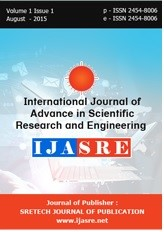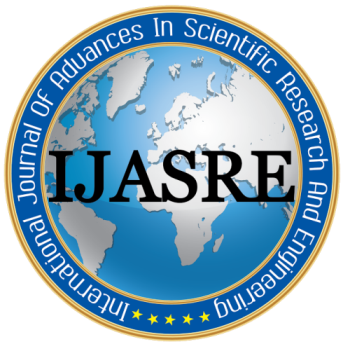Estimating and Mapping of Net Migration in the Midlands (United Kingdom) Between the Period of 1911-1921
DOI:
https://doi.org/10.31695/IJASRE.2021.33934Keywords:
Net migration, Spatial, Areal interpolation, Polygon, MidlandsAbstract
The spatial distribution of population in both national and international perspectives play a significant role in determining demographic and economic situations in all countries of the world. Therefore, net migration has a more complex set of features involving the redistribution of a different component of the population with different reasons for migration. This study uses data collected from the Office for National Statistics (ONS) United Kingdom to demonstrate the method of areal interpolation by using polygon as a tool of Geographical Information Systems (GIS), to estimate net migration in the Midlands between 1911 and 1921. By considering the male population aged between 18 and 25 years. The results revealed that certain types of employment which include agriculture has the highest correlation value (r = 0.08), light industry (r = 0.16), staple industry ( r = 0.15), and service industry (r = 0.16), these types of employment tend to attract more people to either coming into or going out of a population of an area, hence, its results to the movement of people from one place to another.
References
Cromley, R. G., Hanink, D. M., & Ebenstein, A. Y. (2010). Estimating and mapping the Intercensal internal net migration of China, 1990-2000.Cartography and Geographic Information Science, 37(3), 229–238. 10.1559/15230401079219491
Finney, N. & Simpson, L. (2009). Population dynamics: The roles of natural change and migration in producing the ethnic mosaic. Journal of Ethnic and Migration Studies, 35(9), 1479–1496. 10.1080/13691830903125935.
Flowerdew, R. & Salt, J. (1979). Migration between labour market areas in great Britain, 1970–1971. Regional Studies, 13(2), 211–231. 10.1080/09595237900185181.
Gössling, S. & Schulz, U. (2005). Tourism-related migration in Zanzibar, Tanzania. Tourism Geographies, 7(1), 43–62. 10.1080/1461668042000324058.
Gregory, I. N. (2000). An evaluation of the accuracy of the areal interpolation of data for the analysis of long-term change in England and Wales. In Proceedings of the 5th International Conference on GeoComputation (p. 1994). Kent: University of Greenwich.
Holt, J. B., Lo, C. P., and Holder, T. W. (2004). Dasymetric Estimations of Population Density and Areal Interpolation of Census Data. Cartography and Geographic Information Science, 31, 103-121.Retrieved January 2008 from SMU Interlibrary Loan.
Horner, B. L. (2008). Comparison of Population Distribution Models using Areal Interpolation on Data with Incompatible Spatial Zones. Papers in Resource Analysis, 11, 1-15.
Joseph, G. (1975). A Markov analysis of age/sex differences in inter-regional migration in great Britain. Regional Studies, 9(1), 69–78. 10.1080/09595237500185061.
Stillwell, J. & Hussain, S. (2010). Exploring the ethnic dimension of internal migration in great Britain using migration effectiveness and spatial Connectivity. Journal of Ethnic and Migration Studies, 36(9),
Mete, M., & Özbaş, H. (2015). The Impact of Economic Development on Regional Migration In Turkey. Journal Of World Of Turks / Zeitschrift Für Die Welt Der Türken, 7(3), 119-135.1381–1403. 10.1080/1369183x.2010.497987
Downloads
How to Cite
Issue
Section
License
Copyright (c) 2021 Muhammad Ali Bukar, Wakil Malah Bukar Malah Bukar, Dala A., Waziri, M.

This work is licensed under a Creative Commons Attribution-NonCommercial 4.0 International License.








